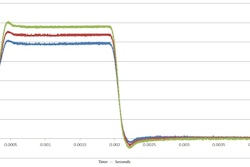Cummins Westport Inc. introduced the 2016 ISB6.7 G, a 6.7-liter MidRange, factory-built, dedicated natural gas engine, to the Type C School bus market at the North American School Bus Show – STN Expo Conference and Trade Show July 25 to 28 in Reno.
The ISB6.7 G natural gas engine is based on the Cummins ISB6.7 diesel engine platform – the industry leader in the Cummins MidRange engine family and the top-selling engine in the school bus market. The ISB6.7 G is fueled by compressed natural gas (CNG), liquefied natural gas (LNG) or renewable natural gas (RNG), utilizing Cummins Westport's proprietary spark-ignited, stoichiometric combustion with cooled exhaust gas recirculation (SEGR) technology. Currently in field trials, the ISB6.7 G will be in full production by mid-2016.
An important feature of the ISB6.7 G is the three-way catalyst (TWC) aftertreatment which is packaged as a muffler and is maintenance-free. No diesel particulate filter (DPF) or selective catalytic reduction (SCR) aftertreatment will be required.
Preliminary specifications include a range of ratings up to 260 hp and 660 lbs.-ft. of torque, and automatic transmission capability to meet customer and OEM requirements. The ISB6.7 G will be manufactured at the Cummins Rocky Mount Engine Plant in Whitakers, NC.
"We are pleased to display the ISB6.7 G to pupil transportation professionals from across the United States and worldwide here at the STN Expo," says Rob Neitzke, President of Cummins Westport. "The ISB6.7 G is the natural choice for Type C school bus customers desiring clean, quiet and safe operations with diesel-like power and performance."
The ISB6.7 G will be certified at launch to meet the U.S. Environmental Protection Agency (EPA) and California Air Resources Board (ARB) emissions standards of 0.20 g/bhp-hr nitrogen oxides (NOx) and 0.01 g/bhp-hr particulate matter (PM), and 2017 U.S. greenhouse gas (GHG) and fuel-economy regulations.

















